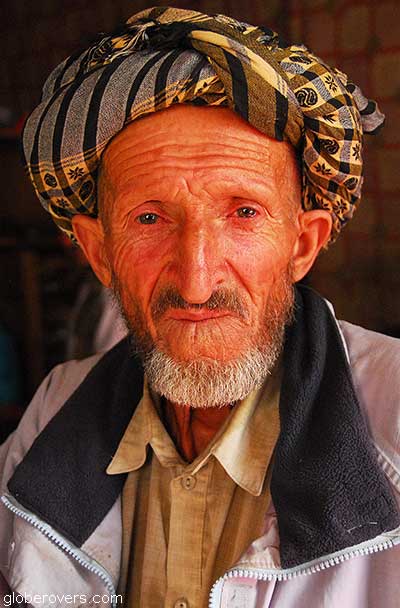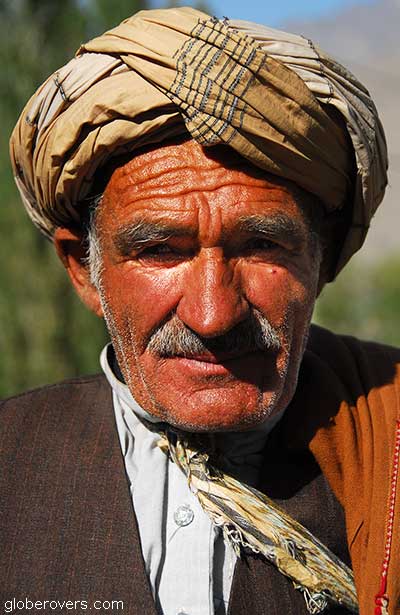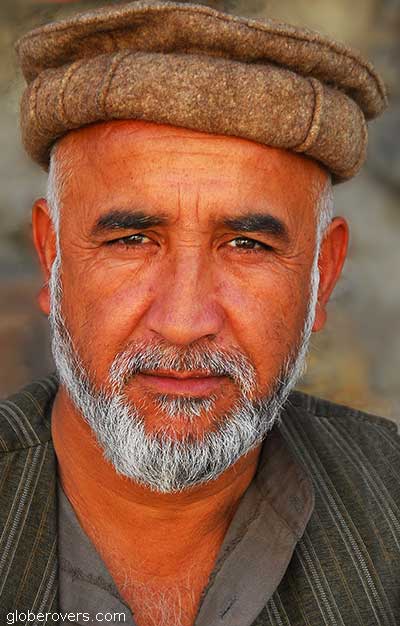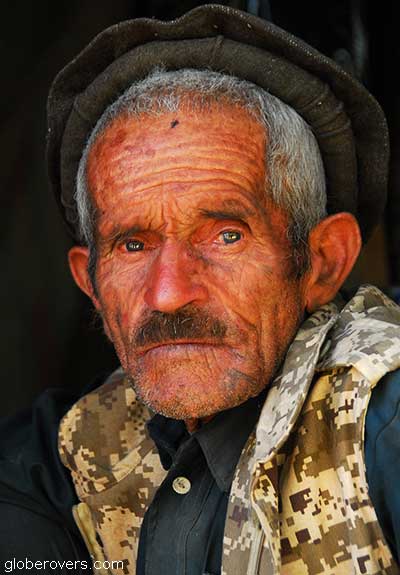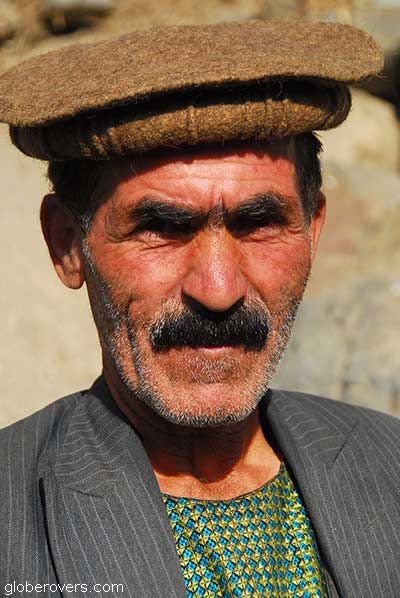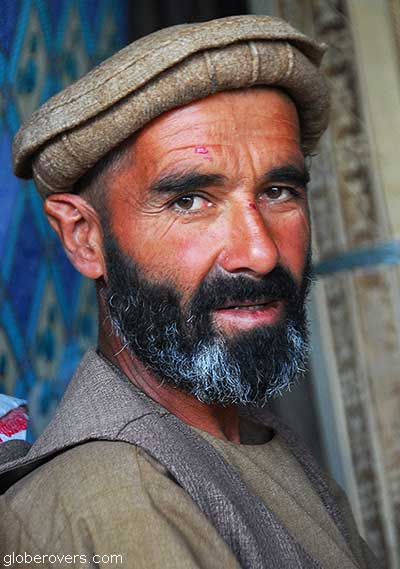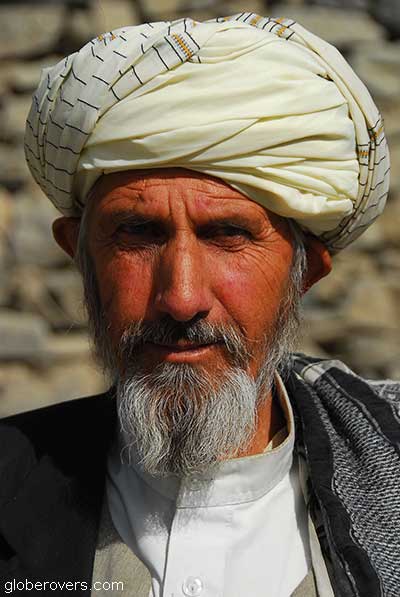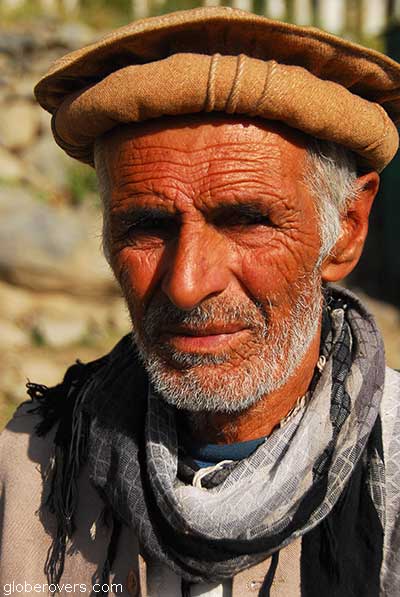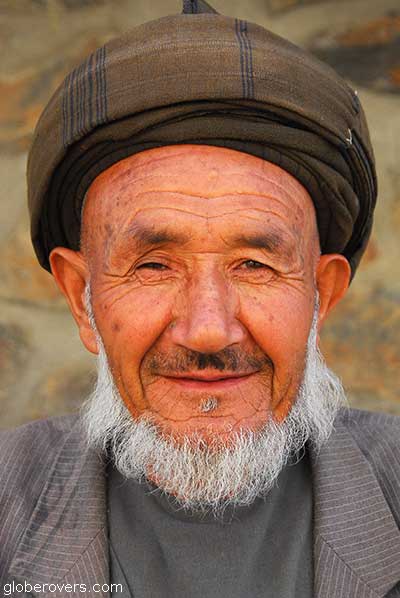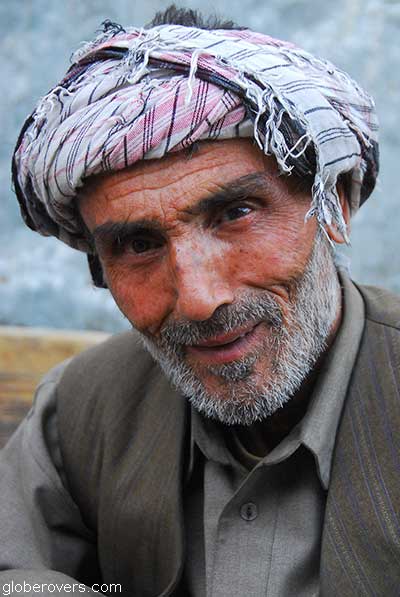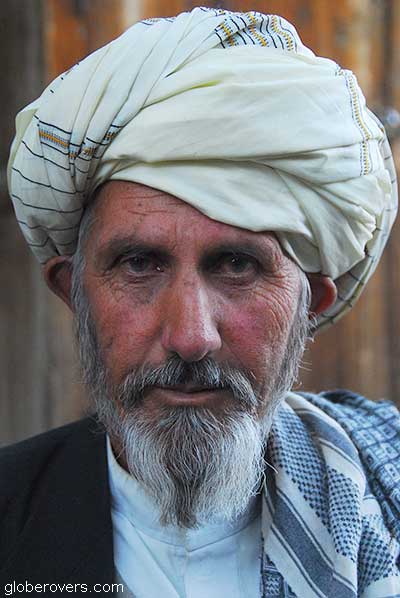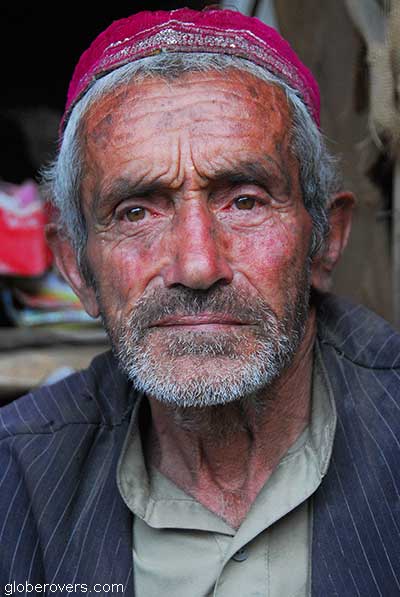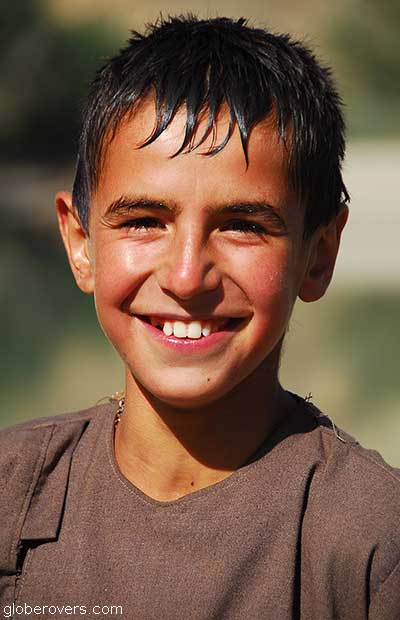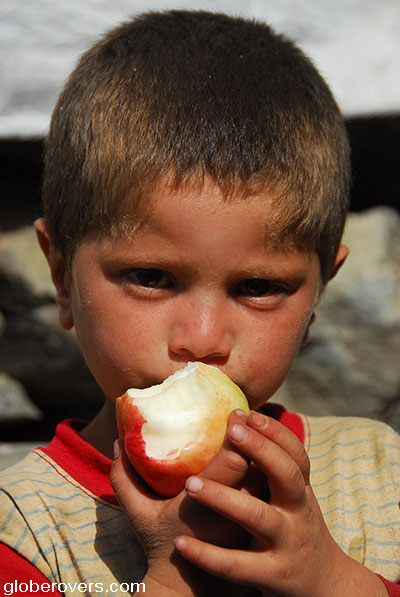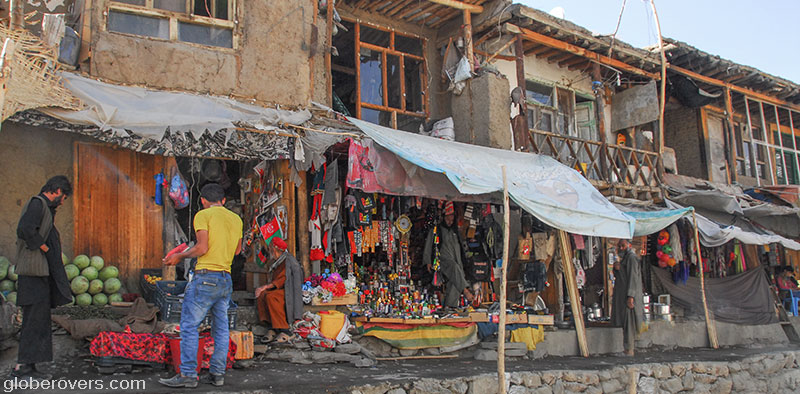
Afghanistan is a vast country blessed with beautiful mountains and ancient villages, though sadly much of the country is still too dangerous for most travellers. While the situation remains flux, some pockets in the northeastern areas, including the Wakhan Corridor, have been declared safe enough for travel.
If you choose to visit Afghanistan, you’re going at your own risk. Do your research carefully to understand the current levels of danger, and the risks you are taking!
Along the 1,125 km (700 mi) long Panj River (that forms a considerable part of the Afghanistan – Tajikistan border), lies the small Tajik town of Khorugh (or Khorog) – 520 km (323 mi) southwest of Tajikistan’s capital, Dushanbe. Khorugh is the capital of the Gorno-Badakhshan Autonomous Region (GBAO), a large region in eastern Tajikistan which makes up 45% of the land area of the country but only 3% of its population.
Khorugh lies at an altitude of 2,200 metres (7,220 ft) above sea level, high and dry in the Pamir Mountains almost at the intersection of three mountain ranges – the Hindu Kush, Pamir and Tian Shan. Not far away are the Zagros Mountains to the southwest and the Altay Mountains to the northeast, all linked to the Kunlun, Karakoram and the Himalayas. Khorugh is also lies right at the confluence of the Gunt and the Panj rivers (see map below). A region of towering mountains and meandering rivers! An idyllic location!
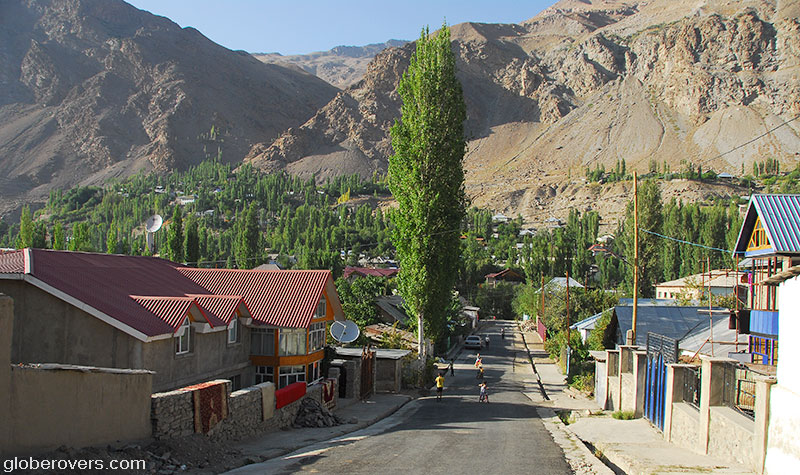
Due to its remoteness, the town is best reached by flight on the small Polish-built Antonov AN-28 turboprop from Dushanbe. The infamous Tajik Air daily flight from Dushanbe to Khorugh often gets cancelled at short notice due to unfavourable weather conditions. Some travellers reported being on the runway, ready to take-off, when their flight got cancelled due to high winds in the mountains.
This flight is (or rather was) a must for any lover of mountain scenery while working up a load of adrenaline. As the mountains are too high to fly over, the small plain had to zig-zag around the glacier-covered peaks. What an experience that was! Sadly, the plane got too old and was moth-balled in October 2016. The Deputy Director-General of Tajik Air, Faizullo Sattorov, said in 2015 that the Dushanbe to Khorog route is “one of the most difficult in the world” and we can believe him! Apparently, no replacement plane is available to take over. Whether it will be reinstated, only time will tell. Hopefully, His Highness Prince Karim Aga Khan will step in and provide funding, as he so often does!
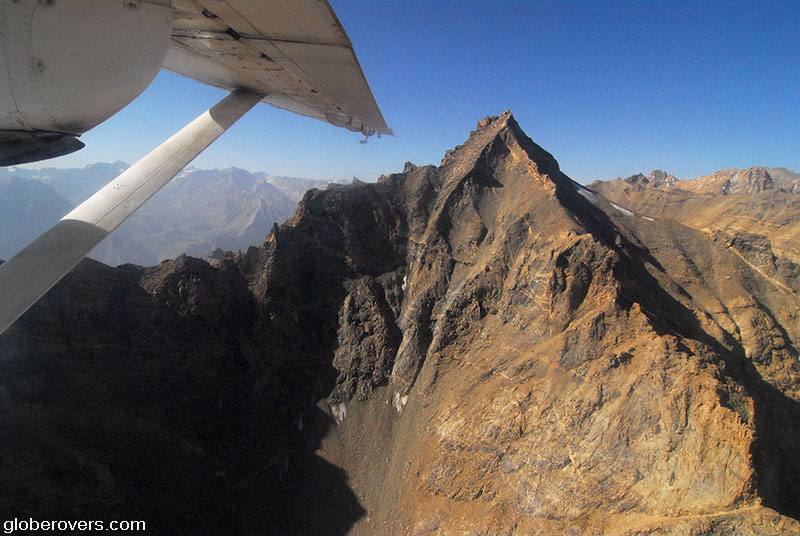


A possible alternative, costing about US200, is to fly on the chartered flights of PACTEC, a humanitarian aid organization. Another alternative is to fly by private helicopter (an Mi-8 Mil Helicopter) from Dushanbe which costs (check to confirm) US1,000 for the entire heli, or $200 per seat if enough passengers to fill up. It seems to fly only on Tuesdays and Fridays. For more information contact PACTEC at tjk-reservations@pactec.net.
These days, most visitors to Khorugh arrive by shared taxi or private vehicle after a gruelling 12 to 16 hours (or by 20+ hours bumpy bus ride) southwest from Dushaben, or from the east via the Pamir Highway.
Among the reasons for visiting Khorugh is to enjoy the charming town with its interesting Tajik residents.
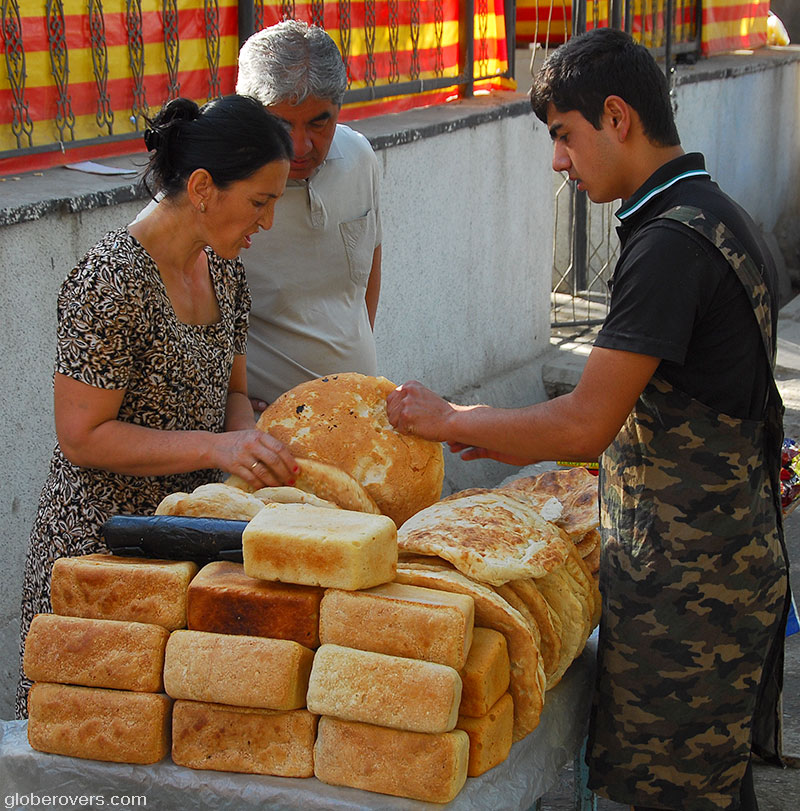
The town is also the starting point for the long eastward drive along the southern Tajik-Afghan border to Murgab, Karakul Lake, and then either west to China’s Xinjiang Province, or further north into Kyrgyzstan. To the immediate south of this route, lies Afghanistan’s Wakhan Corridor.
Another reason for visiting Khorugh is to enter Afghanistan. There are two crossings along this stretch of the border:
- A few kilometres from Khorugh, past the airport, is a bridge over the Panj River. Before crossing the bridge is the Tajik immigration, and on the other side of the bridge is the small Afghan immigration office. The main reason for crossing here is to visit the Afghan village of Shugnan, which is what this article is all about!
- An alternative crossing into Afghanistan is at Eshkashem (or Ishkoshim or Ishkashim), about 100 km south of Khorugh where the river turns to the east and forms the border between Tajikistan and Afghanistan’s Wakhan Corridor to the south. Most people who cross here are heading to trek along the Wakhan Corridor. This incredibly beautiful valley is 350 km (220 mi) long and 13 to 65 kilometres (8 to 40 mi) wide, wedged between the Pamir Mountains to the north, and the Karakoram range to the south.

We skip the Wakhan Corridor for a later date and head west of to the mountain village of Shughnan.
Why Travel to Shughnan in Afghanistan?
- The low-down: While Afghanistan is well known for its tumultuous past, the country has a rich and colourful culture. Travelling around the country is risky and not recommended, though a short visit to the village of Shughnan in the northeast near the Tajik border seems safe, most of the time. Do check the current safety warnings before heading across the border from Khorugh in Tajikistan.
- The brightest highlight: As in much of Afghanistan, here in the small mountain village of Shughnan, time has stood still for a very long time. It is like going back in time, 100 years. It is quite a culture shock!
- Intrepid destination: Totally an intrepid destination. This part of the world is remote and unspoiled by tourism. However, you may come across a like-minded traveller and you will be happy to know you are not totally on your own.
- Globerovers score (10 is highest): While there is not much to see in the village, just the feeling of being in Afghanistan and meeting the friendly villagers who will stare at you like you are from Mars, is an odd feeling. Quite an experience to wander around the dusty paths, preferably with a new local friend who can “open a few doors”. GlobeRovers score of 8.5/10, but add another 0.5 for the immense adrenaline rush = 9.0.

Table of Contents
Getting an Afghan visa in Khorugh
It is generally easy to get a tourist visa at the tiny Afghan consulate in Khorugh, though this could change at no notice. Bring along your passport, a passport photo, a copy of your passport and US dollars as payment. Some of the formalities may include questions about your life, marriage, children, and “why you want to cross the border into Afghanistan.” Complete the application form, pay the dues, and return the next morning (or same day if you are lucky) to collect your passport with the full-page visa glued into your passport.
Fees depend on your nationality and vary between $100 and $150 for a one-month single entry visa. American’s are singled out and slapped with a $200 to $220 fee. At least Americans may enter Afghanistan while the reverse is hardly impossible.
Please note that “Since the summer of 2018 it has been reported that the consulate in Khorugh may inform you that you can only use the visa to enter into the Afghan Wakhan Corridor or at the bridge near the Khorugh airport, but there is nothing marking this information on your passport. Travellers have reported getting the visa in Khorugh and entering Afghanistan from Uzbekistan without issues”. Also note that solo female travellers not accompanied by a man, may get denied a visa.


The interesting journey into Afghanistan
A short taxi ride from the centre of Khorog drops the lone adventurer north of Khorugh’s small airport at a narrow bridge across the Panj River. Here both the Tajik and Afghan immigration officials are friendly and will be most surprised to see a foreign tourist.
Don’t try to cross around lunchtime as the immigration officials on both sides of the bridge will be on their lunch break. Once stamped on the Tajik side, walk across the short, narrow bridge to the Afghan side where you will go through similar procedures.

When I arrived on the Afghanistan side of the bridge, the Afghans were having an early lunch and invited me to join them. Sitting on the floor, the meal was dominated by meats and bread, enjoyed with milktea.
After lunch, the friendly immigration officer stamped my passport, and wave me off with a “welcome to Afghanistan and be careful” in their broken English. Off I went in search of the village of Shughnan.
As in much of Afghanistan, here in the small village of Shughnan, time has stood still for a very long time.
A hiking path follows the river banks where farmers grow vegetables and hay for their animals. The river flows slowly and provides irrigation and a place to cool off for the local kids.
The pleasant hike from the bridge to the village is about 3 km (1.9 mi). The kids from the farming communities will first notice you and try to communicate. You can’t blame their curiosity!
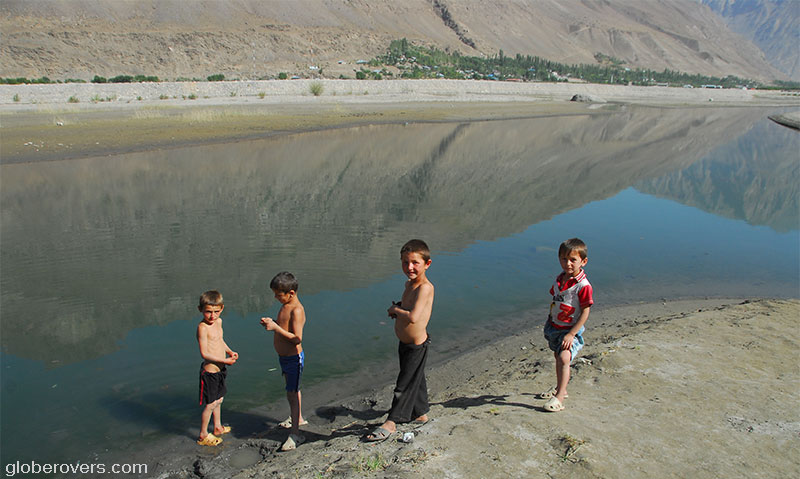
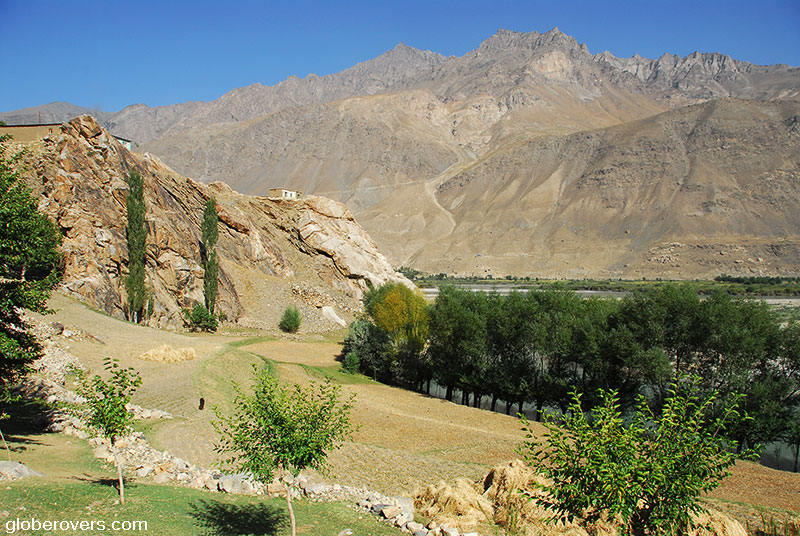
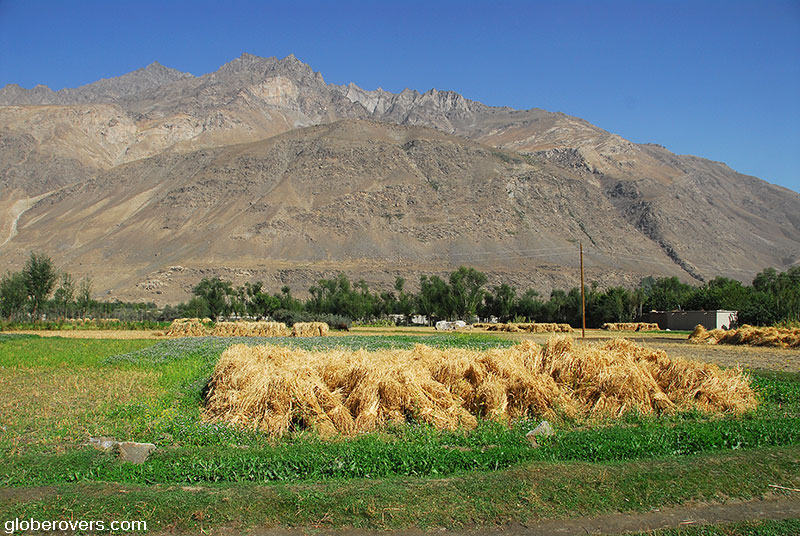
Finding your guesthouse
While a travel agency in Khorugh explained to me where to find the only guesthouse that takes in foreigners, I was not lucky enough to find it. When I visited the place, which I was quite sure was the right house, the residents spoke no English and indicated that it was not possible to stay for the night.
No worries. Another option is available. Right across the small bazaar in the village is a hotel, or rather a hostel, or best described as a “travellers inn” like those in horror movies. It is basic, extremely basic.
“What first struck me most of Afghanistan was the incredible beauty of some of the people – young and old. Though women are extremely ‘boxed in’”.
As I opened the door of the travellers’ inn, which directly spills out onto the small unpaved street, I found a large sleeping area right on the floor. The sight of many old bearded men sitting around on the floor, suggested to me that the inn was quite full. Someone called me in to see the “single room” but I decided to stay outside and move on, ready to sleep under a tree.
Let’s move to the next option. With almost no English spoken in the village, ask every friendly-looking person – by placing your hands to the side of your head – that you are looking for a place to sleep. Most people will shake their heads indicating that they have no idea what you want, or where you can sleep, and that they are amazed to see a tourist in their midst. Don’t despair. Sooner or later someone, most likely a younger person who studies English at school, will come up to you and ask: “you want sleep?” You immediately will experience the “aha-feeling” and say “yes, do you know where I can sleep tonight?”

Hopefully, the good Samaritan won’t point you back to the travellers’ inn, but will lead you down green pastures where a local family will be overly excited to offer you a bed on the floor. Take it with a smile. This is your lucky day.
Rather than relying on food from your host family, head back to the bazaar and pick up a few items for dinner which you will share with the family.
Don’t expect to find any restaurants in the village as people only eat at home. As you wander around the bazaar looking for something edible, you will find several reasons to immediately become a vegetarian. You certainly would not want to stop by the butcher’s shop.
Continue on to buy a few veggies such as tomatoes and onions and maybe potatoes and large flatbread. Limited fruits and vegetable are grown in this mountain village so their level of freshness is quite dismal.
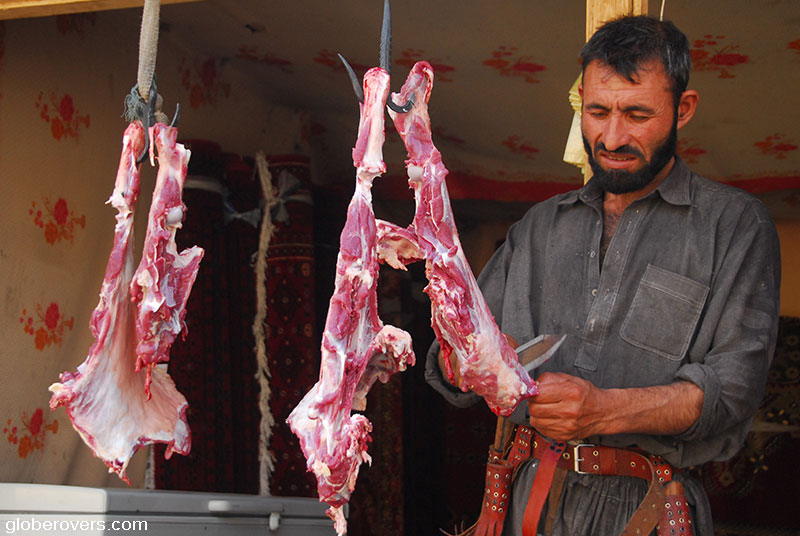
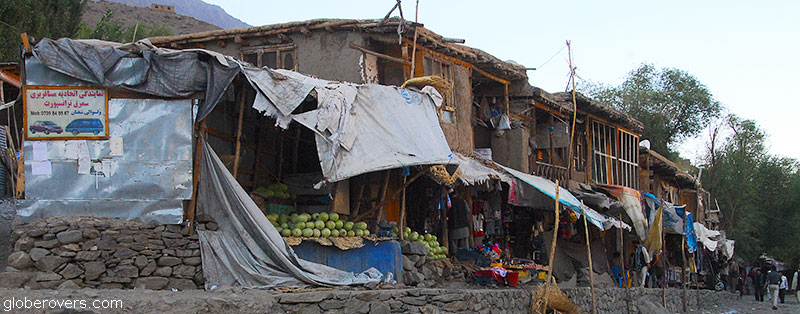
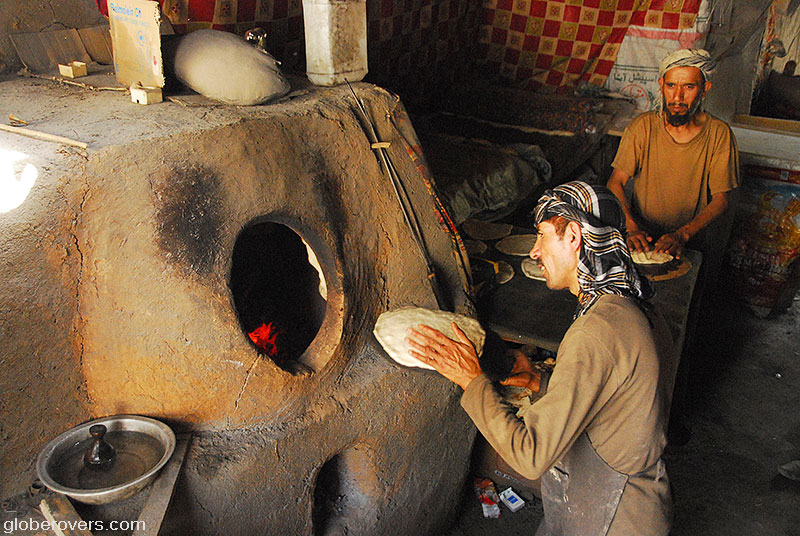
Back at your “guesthouse”, your hosts will be glad to take your offerings and prepare a nice dinner consisting of the tomatoes and onions you brought and may add some Afghan bread (naan-e Afghani), rice, yogurt and milk-tea. As there are no better options, you should enjoy the lovely meal with a smile.
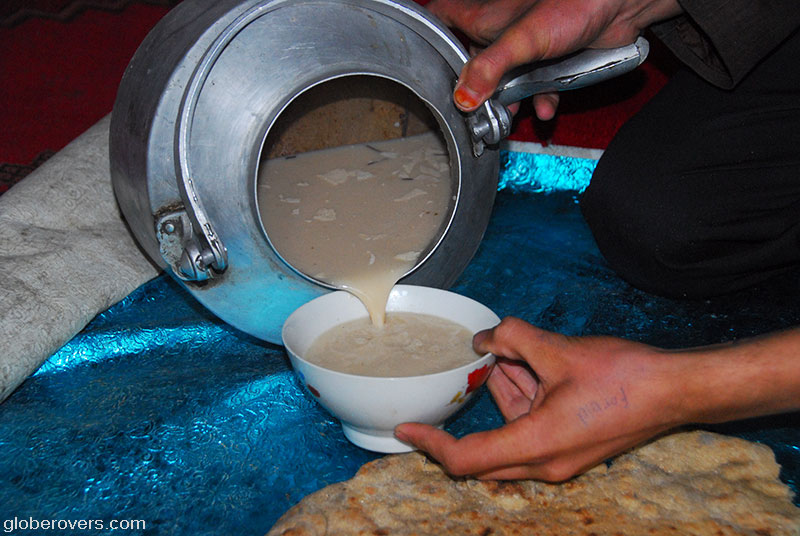
After dinner sit around on the floor with people of your gender as it is unlikely that people of the opposite gender will socialize with a stranger in their home. Watch television as the national Afghan soccer team hopefully beats Pakistan. What a celebration!
By around 10pm you will be in pain from sitting on the floor, at which time you should suggest its time for you to get in your bed, prepared on the floor. With just a few blankets between your body and the floor, you hopefully will get a good night’s rest and wake up the next morning with breakfast served in your bedroom.
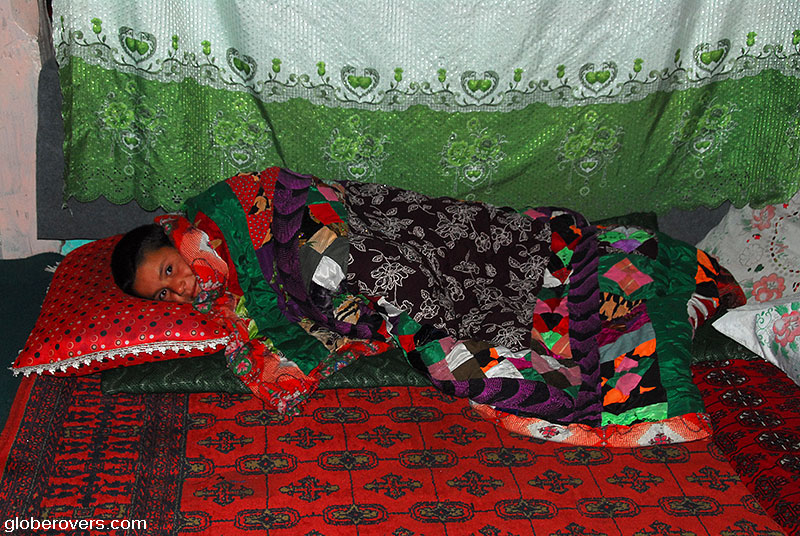
As you most likely had to share the room with several other people of your gender, together you will enjoy breakfast consisting, once again, of naan-e Afghani, rice, yogurt and milk-tea, as the tomato and onion salad sadly was finished last night. Enjoy the meal and head out the door after warmly thanking your hosts with a nice tip in the hand.
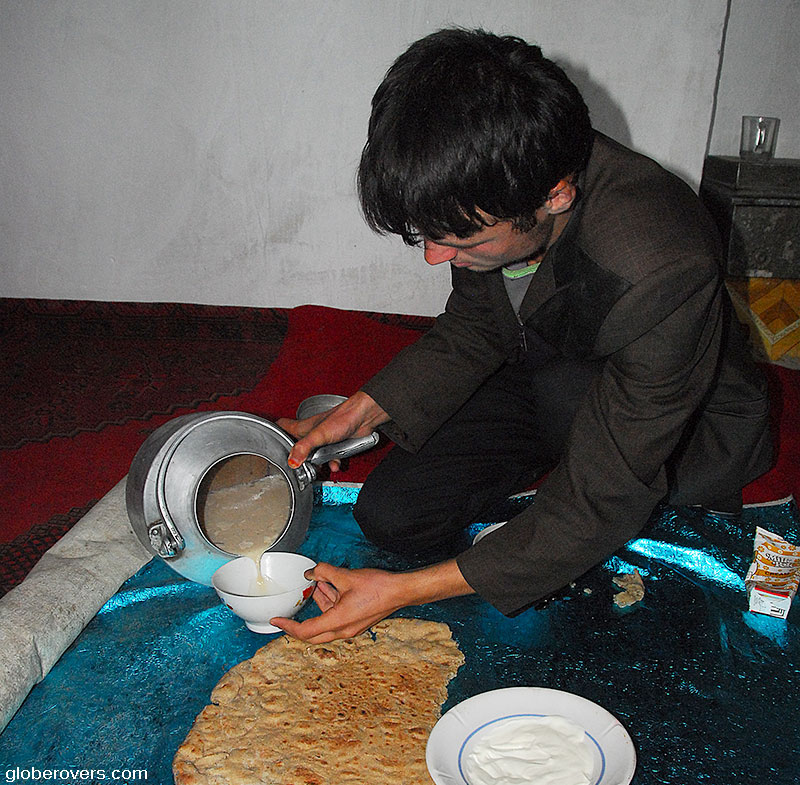
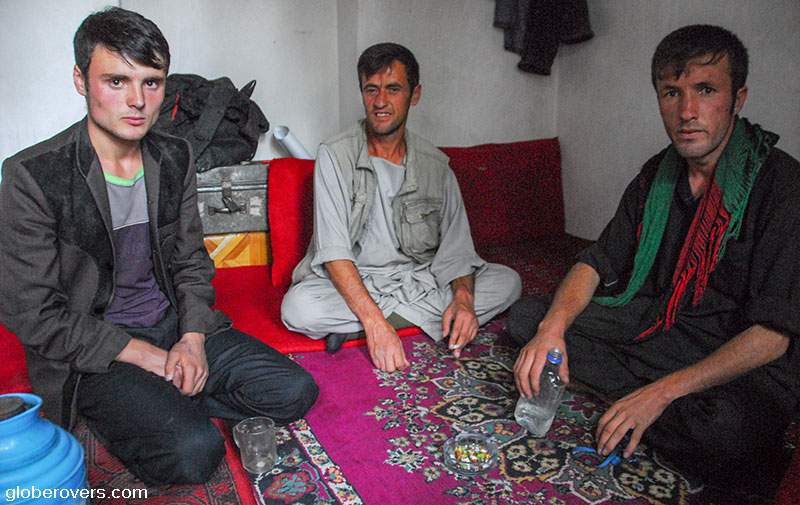
It’s your second day in Afghanistan and there is much to explore. People are generally very friendly and overwhelmingly surprised to see a foreigner in their midst.
Before long you will have met some amazing characters, including several men with machine guns who are there to keep the village safe from conquerors and of course the unwelcome Taliban. You may also come across some young women who will turn their backs to you as you approach. I’m not sure what that means, but I assume they are shy to be seen by a foreigner.
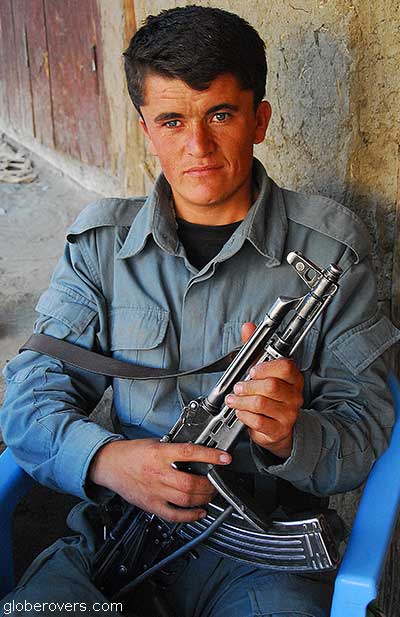
Enjoy your time in Afghanistan. When it is time to leave, you will look back on this visit as one of the highlights of your travel life!

The people of Shughnan
Essential Information
Getting There
The relatively safe northeastern region of Afghanistan is best approached from the border crossings at either Khorog, Tajikistan or further south at Ishkoshim, Tajikistan. To get to Shughnan, cross the border from the Tajik town of Khorog and walk about 5 km (3.1 mi) north of the border-crossing along the Panj River to reach the small mountain village.
When to Go
Avoid winters when it is cold and snowy. The rest of the year is good to visit this part of the world.
Getting Around
From the border-crossing and back, just walk. Around the village are roads, but it’s a small village and best explored on foot. Probably no other way than a donkey.
Where to Stay
Accommodation is the biggest challenge. Unless a much-needed guesthouse is now open, you will need to walk around and ask residents if they would take in a lonely traveller for the night. Make sure to buy food for the family and handing over about $10 for the night when you depart. The people have little money and offering you a place to sleep is a wonderful gift to you!
Photography
Taking photos of women is taboo. Men are not exactly easy models either. Be polite and discreet as you ask for permission prior to photographing them.
Cost of Travel
This is an extremely poor village though shopkeepers tend to charge premium prices to the odd foreign traveller. Bargain or walk away with a big smile.
Safety
Some parts of the country are relatively safe and offer a rare opportunity to experience the Afghan way of life. The situation is flux and a place that was safe last week may not be safe today. When I visited Shughnan, I was warned (forbidden) by locals not to travel outside the protection of the village as “there are lots of Taliban”.
☛ Read more: Travelling around Central Asia


Further reading

Blog post and photos by Peter who has been travelling almost full-time since 2005 and has been to over 122 countries. He visited several countries, such as Japan, more than 20 times. Peter is Editor-in-Chief and Publisher of GlobeRovers Magazine, an independent travel magazine focused on intrepid destinations.

